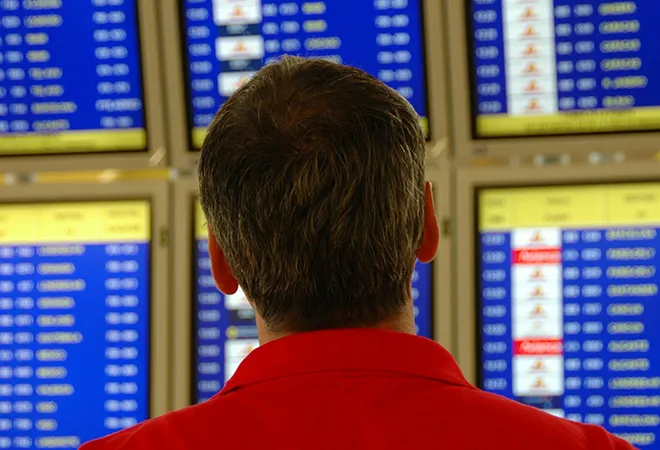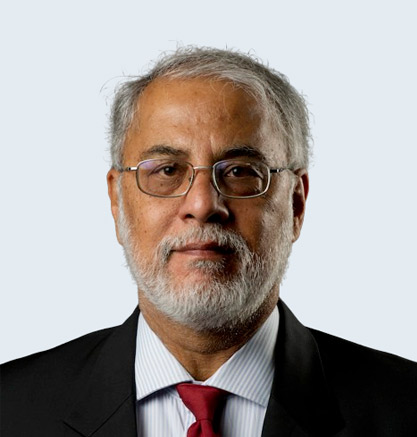-
CENTRES
Progammes & Centres
Location
The ideas of disinformation and misinformation are as old as history. What is new, are the technologies that enable its rapid spread.

In the era of social media, “news” stands in a hall of mirrors where it is difficult to decide which image is true and which false. But it is not just the medium that is the problem; it is those who are working hard to generate false images and ideas usually for a nefarious purpose. Covid-19 has come up with its own brand of disinformation, which ranges from stuff being put out by conspiracy theorists, to actions of states pushing one or the other agenda.
From the outset, China and Russia seized the pandemic to spread doubts about the US ability to handle the crisis. Pro-Russian websites put out conspiracy theories to spread fear. But in the case of China, they did not hesitate to use government linked social media accounts to sow confusion.
On Wednesday, the European Commission issued a 16-page “joint communication” squarely blaming Russia and China for spreading Covid-19 related fake news. In the report addressed to the European Parliament and high EU bodies, the European Commission noted that the Covid-19 pandemic had been accompanied by an ‘infodemic’, where false or inaccurate has been spread over social media. It said foreign actors and certain third countries, “in particular Russia and China, have engaged in targeted influence operations and disinformation campaigns around Covid-19 in the EU.”
In a pre-announcement briefing on Tuesday, European Commission Vice-President Vera Jourova told journalists; “we have, for the first time, decided to name China in our report. I’m glad we did this because if we have evidence we must say it.” There is still a great deal of shadowboxing going on between the EU and China. For example, the only actual reference to China by name in the report is the one cited above. Jourova refused to provide actual details of Chinese activity.
On Wednesday, EU foreign policy chief Josep Borrell told the media that he had assured China’s foreign minister Wang Yi that the bloc was “not going to embark on any kind of Cold War with China.” A day earlier, Borrell had held video talks with Wang and had been quoted later as saying that while China was systemic rival to the EU, it was not a military threat. He had also called on member states to provide more resources to fight disinformation from China and elsewhere.
But disinformation is not just a China thing. The old masters of the game are the Russians, whose predecessor, the Soviet Union, coined the term “Dezinformatsia”. It was actually the Russian campaign against the EU that led to the establishment of the East StratComForce within the European External Action Service (EEAS), EU’s diplomatic service, to tackle disinformation. In recent months this outfit has been keeping track of the Covid-19 related disinformation campaign.
The “infodemic” has been far more virulent in the US-China context. We have seen President Donald Trump and Secretary of State Mike Pompeo accuse China of covering up information relating to the pandemic and even hinting that the virus may have had its origin in a laboratory. On the other hand, China’s ‘Wolf Warrior’ diplomats have not hesitated to accuse the US itself of initiating the virus. Though many of these are official remarks, the medium of choice amplifying them has often been Twitter, banned in China, though being used by Chinese officials and diplomats in the Covid-19 campaign assiduously. In the US, in mid March, there were a torrent of messages on mobile phones and social media feeds of millions of Americans warning that the Trump administration planned to lockdown the US and virtually declare martial law. Eventually, the National Security Council had to step in and announce on Twitter that these messages were fake.
In Europe, in particular Italy, the Chinese campaign was aimed at shifting the narrative on Covid-19 from “the country where the virus originated” to “the country that came to the rescue of other nations.” As it is, issues putting China against the US have come tumbling one after another — the Chinese opacity on the origins of Covid-19, the US accusations and China’s counter, the Hong Kong national security law and the anti-police protests in the US.
In an analysis by The New York Times, a suspiciously large number of Twitter handles were active in re-tweeting China’s diplomats and news outlets, with some behaving more “as loudspeakers, not as sharing platforms.” A third of them have come up in the last three months when Chinese officials took to Twitter to fight their information war against the US. Twitter has in the past suspended accounts, especially of Chinese government backed operators aimed at the Hong Kong protests.
The European Commission report is based on a March 2020 directive by EU leaders to the EEAS to counter the disinformation campaign and reinforce the morale of the Europeans severely hit by the Covid-19. The EEAS report of 24 April ran into trouble when it was alleged that it had toned down its criticism of China at the insistence of Chinese officials. At a hearing of the European Parliament’s foreign affairs committee, Borrell had to defend against allegations that his staff had watered down the report to appease China.
The report did, however, say that there were coordinated campaigns being run across the EU “promoting false health information and disinformation” about EU and its partners using “foreign state-controlled media and social media channels.” The report named Russia and to an extent China, and said their aim was to deflect blame for the outbreak of the pandemic and these false information campaigns were having a negative impact across EU.
A second EEAS report covering the period 23 April to 18 May and issued on 20 May said that though the disinformation campaign had decreased a bit, it was still very much around. “Pro-Kremlin” sources continued to retail conspiracy theories, while “state actors like China” sought to deflect the blame “to promote their own governmental system and enhance their image abroad.”
But disinformation is not a one-way street. A report in Politico citing a study by Australia Institute’s Center for Responsible Technology said that Trump supporters have spread Covid-19 rumors about China. An analysis of 2.6 million tweets over a 10-day period in March found that there were around 30 groups identified with Trump’s supporters, the Republican Party and the conservative conspiracy theory group ‘QAnon’ that promoted the anti-China narrative on Covid-19’s origins. Many of these accounts are automated. What the government is also likely to be doing covertly is not known. But you can be sure, they would be giving it back as good as they get.
The ideas of disinformation and misinformation are as old as history. What is new, are the technologies that enable its rapid spread — smart phones and social media software, and they are able to amplify our social and cultural biases in the negative direction. Tackling these is a larger project in which society itself must play a key role through education and promoting awareness of the issue. Like the Covid-19 pandemic, the ‘infodemic’ can be a very destructive force, in this case, damaging our already battered democracy, society and way of life. We need to be able to counter it through effective strategies of promoting transparency, rapid, authentic and authoritative information flow to create the antibodies that can resist the maligning goals of disinformation.
The views expressed above belong to the author(s). ORF research and analyses now available on Telegram! Click here to access our curated content — blogs, longforms and interviews.

Manoj Joshi is a Distinguished Fellow at the ORF. He has been a journalist specialising on national and international politics and is a commentator and ...
Read More +